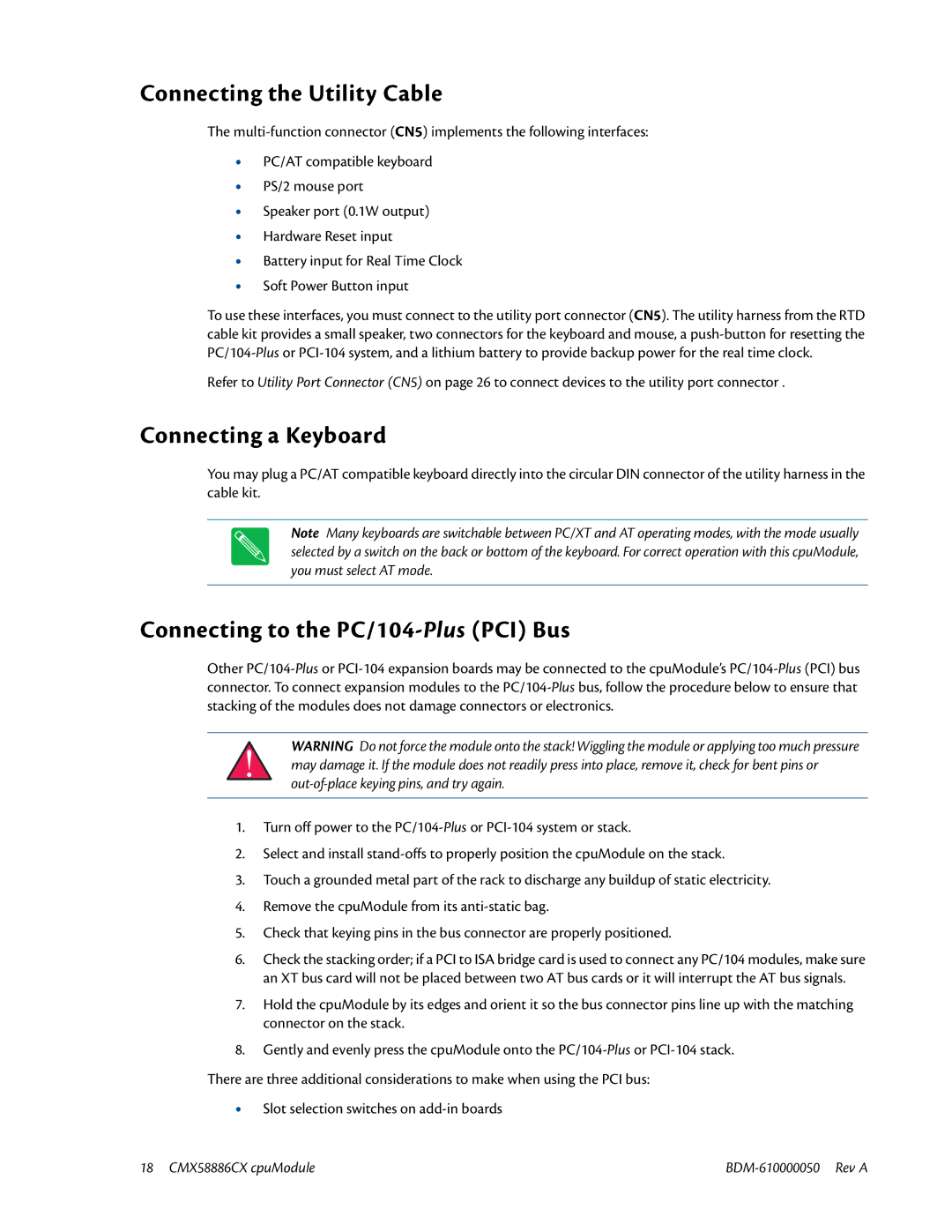
Connecting the Utility Cable
The
•PC/AT compatible keyboard
•PS/2 mouse port
•Speaker port (0.1W output)
•Hardware Reset input
•Battery input for Real Time Clock
•Soft Power Button input
To use these interfaces, you must connect to the utility port connector (CN5). The utility harness from the RTD cable kit provides a small speaker, two connectors for the keyboard and mouse, a
Refer to Utility Port Connector (CN5) on page 26 to connect devices to the utility port connector .
Connecting a Keyboard
You may plug a PC/AT compatible keyboard directly into the circular DIN connector of the utility harness in the cable kit.
Note Many keyboards are switchable between PC/XT and AT operating modes, with the mode usually selected by a switch on the back or bottom of the keyboard. For correct operation with this cpuModule, you must select AT mode.
Connecting to the PC/104-Plus (PCI) Bus
Other
WARNING Do not force the module onto the stack! Wiggling the module or applying too much pressure may damage it. If the module does not readily press into place, remove it, check for bent pins or
1.Turn off power to the
2.Select and install
3.Touch a grounded metal part of the rack to discharge any buildup of static electricity.
4.Remove the cpuModule from its
5.Check that keying pins in the bus connector are properly positioned.
6.Check the stacking order; if a PCI to ISA bridge card is used to connect any PC/104 modules, make sure an XT bus card will not be placed between two AT bus cards or it will interrupt the AT bus signals.
7.Hold the cpuModule by its edges and orient it so the bus connector pins line up with the matching connector on the stack.
8.Gently and evenly press the cpuModule onto the
There are three additional considerations to make when using the PCI bus:
•Slot selection switches on
18 CMX58886CX cpuModule |
